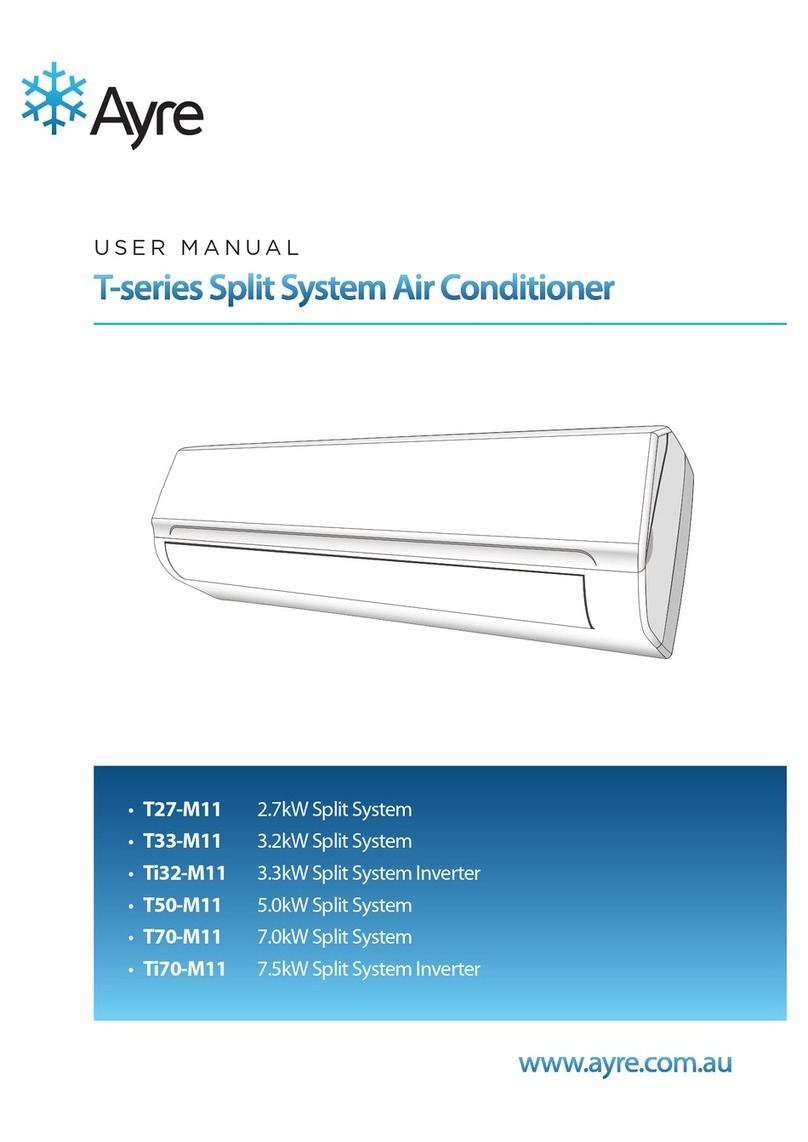CAUTION
The power cord connected to the indoor unit should be
complied with the following specifications
(Type H05VV-F(Indoor), H07RN-F(Outdoor) approved
by HAR or SAA).
1
1
1
N
N
N
2
2
3
3
1 N L
L N
1 N L
1 N
BROWN BLUE
GREEN/YELLOW
BROWN BLUE
BROWN RED
BLUE
BROWN
BROWN
WHITE
Power supply
BLUE
BROWN
WHITE
BLUE
GREEN/YELLOW
GREEN/YELLOW
RED
YELLOW
YELLOW
BLUE
GREEN/YELLOW
The power connecting cable connected to the indoor
and outdoor unit should be complied with the following
specifications
(Type H07RN-F approved by HAR or SAA).
The connecting cable connected to the indoor and out-
door unit should be complied with the following specifi-
cations
(Type H07RN-F approved by HAR or SAA).
• 2.7kW, 3.2kW, 5.0kW cooling model
Terminal on the indoor unit
Terminal on the indoor unit
Terminal on the outdoor unit
Terminal on the outdoor unit
• 2.7kW, 3.2kW, 5.0kW heat pump model
Terminal on the indoor unit
Terminal on the outdoor unit
• 7.0kW cooling model
.
3.6 Connecting the cable between indoor
unit and outdoor unit
3.6.1 Connect the cable to the Indoor unit.
• Connect the cable to the indoor unit by connecting
the wires to the terminals on the control board indi-
vidually according to the outdoor unit connection.
(Ensure that the color of the wires of the outdoor unit
and the terminal No. are the same as those of the
indoor unit.)
NORMAL
CROSS-SECTIONAL
AREA 2.5mm2
(7kW:1.5mm2, 2.7, 3.2, 5kW:1.0mm2)
NORMAL
CROSS-SECTIONAL
AREA 2.5mm2
(7kW:1.5mm2, 2.7, 3.2, 5kW: 1.0mm2)
NORMAL
CROSS-SECTIONAL
AREA 0.75mm2
.
GREEN/YELLOW
Air
Conditioner
Main power source
Circuit Breaker
Use a circuit
breaker or time
delay fuse.
Circuit Breaker
Use a 25A circuit
breaker or time
delay fuse.
Air
Conditioner
Main power source
❒ 5.0kW Model
If a power plug is not to be used, provide a circuit breaker
between power source and the unit as shown below.
CAUTION
❒ 7.0kW Model
If a power plug is not to be used, provide a circuit breaker
between power source and the unit as shown below.
• 7.0kW heat pump model
L N
1 2 3
YELLOW
WHITE
Power supply
RED
L N
L N
Terminal on the indoor unit
Terminal on the outdoor unit
GREEN/YELLOW
BROWN BLUE
BLUE
BROWN
GREEN/YELLOW
YELLOW
WHITE
RED
1
2
3






























